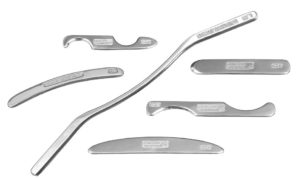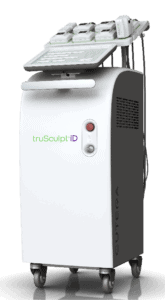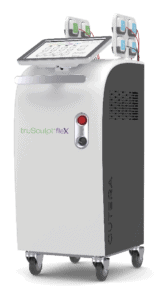Published on
Expanding Your Urgent Care Product Line with Massage Therapy, Aesthetics, and Body Sculpting
Urgent message: Maintaining not only growth but also profitability in the increasingly competitive urgent care marketplace requires a willingness to seek out and assess new services, and the wherewithal to offer those deemed to be a good fit for your business model. “Spa services” may be one such possibility warranting consideration.
Michael F. Boyle MD, MBA, FACEP, Derrick Cooney, MD, and Keith Seal
With the urgent care industry still riding a wave of expansion that began in the early 2000s, now boasting more than 12,000 sites according to some counts, the need to differentiate one operation from another has never been more essential. Urgent care centers prosper by providing convenience and access at an acceptable cost. We progress, however, through continuously reinventing services with innovation, service expansion, and new therapies. Here, we discuss the potential for medical spa services to provide new revenue streams, offer a rationale for adopting those services, and describe a start-up/integration process.
MASSAGE THERAPY
Musculoskeletal injury and strain encompass a large percent of urgent care visits, with an enormous impact on medical costs and lost productivity in America.1 Injury results in local inflammation, causing the muscle and/or fascial planes to become “sticky,” often adhering to each other. If not addressed, this “stickiness” results in abnormal collagen deposition, scarring, and stiffness in muscle and restricted range of motion of joints.
This inflammatory process is reversed by breaking up this stickiness between skin, superficial facia, deep fascia, and muscle and allowing for adequate lymphatic drainage and stimulation of microinjury, resulting in correct remodeling of collagen/elastin improving function. Thus, general massage principles (and skin rejuvenation techniques discussed later), focus on improved local circulation, promotion of lymphatic drainage, stimulation of a low-level inflammatory response to induce healing, and enhancing excretion of waste products trapped in muscle, fascia, and connective tissue. Massage therapy (MT) is very popular among the millennial generation, with “feel good” sessions providing stress reduction, relaxation, and improved joint flexibility/range of motion. Chronic conditions amenable to treatment include fibromyalgia, lymphedema, sciatica, and torticollis. The MT business plan model combines both postinjury management (back and neck therapy) and denovo massage for relaxation and stress reduction.
Types of Message
Most therapists have experience with multiple therapeutic modalities. Following are short descriptions of common massage methods.
Lymphatic drainage
Using mechanical rollers and suction systems, vasodilation occurs with improved lymphatic drainage, reducing localized inflammation. “Cupping” applies local suction, elevating skin and superficial fascia to reduce or eliminate adhesions in the structures, promoting and opening lymphatic flow while also reducing inflammation. Peak tissue temperature and length of therapy are critical aspects to treatment success.
Myofascial release
This is an effective technique for treating restrictions caused by trauma, inflammation, and/or surgical procedures. It is often used when the patient does not respond to traditional physical, occupational, or massage therapy. The focus is on isolation of trigger points and working the specific point and surrounding muscle or fascial area. Properly employed, myofascial release can successfully treat back pain, headaches, whiplash, pelvic pain, sports injuries, chronic pain, neurological dysfunction, chronic fatigue syndrome, jaw pain, sciatica, and fibromyalgia.
Swedish
Swedish massage refers to a collection of strokes applied to the body along with creams or lotions, with the main purpose of improving blood circulation and assisting in the disposal of waste materials from the body tissues. Swedish massage aids in the reduction of tension and anxiety, decreases muscle soreness, speeds tissue healing, and supports the immune system.
Hot stone
Use of hot stones with strategic placement is an ancient method to relieve aching muscles, improve circulation and lymphatic drainage, and stimulate energy. The warm stones expand blood vessels, improving local circulation and removing metabolic waste through the body while promoting relaxation.
Sports
Therapists use deep tissue massage, stretching, and pulsation devices to improve local circulation, relax spasm, breakdown adhesions/scar tissues, relax fatigued/damaged muscles, or to prepare athletes for an intense training day.2 Direct pulsation devices augment therapy by improving lymphatic flow and reducing local lactic acid, improving muscle fatigue, soreness, spasms, and stiffness. Specific vibration frequency and amplitude effectively integrated into percussion massage devices improve blood flow and reduce muscle spasm.
Instrument-assisted soft issue massage
Instrument-assisted soft issue massage (IASTM) techniques provide instrument adjuncts to traditional massage therapists, physical therapists, occupational therapists, athletic trainers, and chiropractors. Instruments allow for deeper penetration, with less discomfort, and shorter durations of therapy providing similar and often better results than traditional massage. (See Figure 1.) Specifically engineered instruments with specific design modifications, such as beveled edges, foster diagnostic exactitude while identifying/amplifying triggers points, muscle irregularity, and scar tissue while reducing stress on the therapist hands. IASTM has been demonstrated to improve many forms of tendinitis/tendinopathy, neck pain, back pain, radiculopathies, muscle spasm/strain common in physical therapy, massage therapy, or chiropractic practices.3

Figure 1. Instruments used in IASTM. (Images courtesy of Graston Technique LLC.)
Equipment and Staffing
We recommend that a single room be dedicated for use by the message therapist. In addition, a dedicated message therapy bed with a heating pad provide the appropriate level of comfort for clients. (Beds costs: $750-$3,000). Warmers for towels and heat packs ($100 to $500) are essential.
The massage therapist typically undergoes a period of training focusing on anatomy, physiology, and the actual hands-on therapy. They may be employed or contracted. Though massage is often not covered by insurance, many patients happily pay $70 to $90 out-of-pocket per 45-60 minutes session, in addition to a $20-$30 gratuity to the therapist. In addition, IASTM and other forms of massage therapy may be covered by insurance, including worker’s compensation.
BODY SCULPTING (ADIPOSE REDUCTION/MUSCLE STRENGTHENING)
Dieting and body image are significant considerations in today’s society. Irrespective of the technology, urgent care centers with integrated weight loss programs with nutrition, medication, and counseling are at a significant advantage when it comes to body sculpting. Wholistic approaches will yield the best results for patients whether they want to improve their appearance or simply want to be more health conscious. It would be advisable to remind patients there is no such thing as a free lunch or a magical approach to weight reduction, adipose modification, and muscle development. In addition, all patients need to be informed that changes may not occur, may occur but return, or may occur and be long lasting. The keys are education, lifestyle modification, nutrition, and exercise.
Having said that, advanced technologies do offer adipose reduction/muscle building through a nonsurgical approach. The charge for services or sessions (lasting 45-60 minutes, on average) ranges from $750 to $1,200 with most treatment programs requiring a minimum of four sessions per patient for completion over a 2- to 4-week period. Therapies are not marketed for weight reduction, but for localized body sculpting with primary focus on the abdominal wall, buttocks, thighs, face, neck, and upper arms
Technology advances offer targeted adipose reduction through three pathways:
- Destruction through targeted cooling (cryotherapy/CoolSculpting)
- Destruction through targeted heating (radiofrequency and ultrasound)
- Destruction through indirect heating via muscle contraction (magnetic muscle stimulation and multidirectional muscle stimulation)
As noted above, these nonsurgical technologies include cryotherapy, high-intensity focused ultrasound (HIFU), thermal destruction via radiofrequency (RF), and muscle building via high-intensity focused electromagnetic energy (HIFEM). Many handheld devices combine HIFU and RF.
Adipose tissue, the “fat cell,” accumulates in well-defined areas, including the midsection, upper things, and buttocks as we age. Traditional dieting reduces the size of adipose cells, but they remain alive and metabolically active. In addition, tissue laxity is not addressed by weight loss through dieting. After even intense weight loss programs, weight redevelops as caloric intake increases, exercise reduces, and the “still living” fat cell enlarges. Newer technologies rely on fat cell destruction or apoptosis. Suggested theories consider localized cell death due to metabolic changes involved in therapy or thermal energy (heating or cooling), depending on the technology utilized.
Cryotherapy
Direct cooling, or cryotherapy, was one of the first noninvasive therapies applied for body sculpting. It is limited to patient with a body mass index of <30, targeting the thigh, abdomen, and flanks. Controlled cooling is accomplished by a suction probe that pulls skin and subcutaneous tissue into a chamber, followed by targeted temperature reduction. While the superficial skin has a controlled temperature, the adipose level is cooled to approximately 4⁰ C. The treated fat cells are crystalized (frozen), then die and are disposed of through the body’s natural elimination process, thus reshaping the body contours.
Some complications include loss of feeling in the treated area that can be prolonged, paradoxical adipose hyperplasia, skin indentation, and discoloration. It should be avoided in patient with cryoglobulinemia, cold agglutinin disease, or paroxysmal cold hemoglobinuria.
Radiofrequency Technology
RF technology penetrates through the skin tissue, resulting in heating of adipose cells, but not affecting muscles. The energy selectively absorbs, resulting in heat generation/build-up to a level of 44⁰-45⁰ C due to impedance of adipose tissues causing both immediate and delayed fat cell destruction without significant change in temperature of either skin.5 Skin and muscle layer heating is reduced by greater vascular flow, allowing for more rapid cooling than adipose.5 Heating of the dermis and subcutaneous tissue also results in collagen denaturation and neocollagenesis, resulting in skin tightening, increased fat cell metabolism, and size reduction. Heating is accomplished much more quickly than cooling; therefore, RF/US treatment sessions are shorter than cryotherapy.


Figure 2. Radiofrequency devices. (Images courtesy of Cutera, truSculpt iD.)
RF heats the adipose tissue to a level where cell death occurs over days to weeks. Skin temperature monitoring occurs and is adjusted to comfort. The metabolic burden from cell death must be flushed out of the patient, assisted by pre- and posttreatment oral hydration. The technique is for localized fat reduction and not marketed for weight loss.
Reports of success with some products include losing 1 to 2 inches from of waist circumference and dropping 2 to 3 pounds. Complications reported include transient erythema of the skin surface, superficial burns from fluid accumulations on the skin, and burns from fluid-filled structure/cysts (dermis, etc.) within the treatment area.5 RF cannot be used close to metallic implants and joint replacements due to potential for heat buildup and burns.
Extracorporeal Shockwave Therapy
Sound wave technology, similar to lithotripsy, targets adipose tissue collections as an adjunct to RF and cryotherapy technology. This sound wave energy may be low intensity extracorporeal shockwave therapy (LI-ESWT) or high-intensity (HI-ESWT). High-intensity shock wave therapy is used for lithotripsy because of its focused mechanical destructive nature. Medium-intensity shock waves have been shown to have anti-inflammatory properties and are used for treating a wide array of orthopedic conditions, such as nonunion fractures, tendinitis, bursitis. physiotherapy/pain relief, sports injuries, and rehabilitation treatment. This sound wave technology energy spreads radially, enhancing treatment through increased metabolic activity, stimulating lymphatic drainage, and increasing blood flow. This results in increased toning of both skin and muscle. LI-ESWT can be used on most parts of the body.
The lower the US frequency (megahertz/MHz), the deeper the body penetration. Thus, the 1 MHz mode is designed for general body treatment where tissues and muscles are thicker. The 3 MHz mode is designed for general facial treatment where tissues and muscles are much thinner. The 5Mhz mode is appropriate for treatment around the most delicate area (the eyes). LI-ESWT uses in aesthetics include cellulite reduction and stretch mark/keloid scar elimination, while in Urology it provides treatment for erectile dysfunction and Peyronie’s disease. It accelerates the healing process in the body by stimulating the metabolism and enhancing blood circulation to regenerate damaged tissue. LI-ESWT stimulates angiogenesis with new blood vessel growth, improving circulation for management of chronic wounds, peripheral neuropathy, and certain peripheral circulatory diseases.
Surface tissue gel assists with US penetration and is used with each treatment. ESWT should be avoided in the anterior neck area to avoid thyroid stimulation, in pregnancy, and patients with pacemaker, heart disease history and other medical conditions
High-Frequency Electromagnetic Technology
High-frequency electromagnetic technology (HIFEM) induces supramaximal muscle contractions not achievable through voluntary activity. When exposed to supramaximal contractions, the muscle tissue is forced to adapt to extreme conditions, and responds by deep remodeling resulting in muscle building. This intense muscle activity releases lactic acid and produces localized heat. Surrounding adipose tissue responds by releasing free fatty acids and other nutrients. It is suggested that this depletion of vital nutrients from the adipose and/or local heat accumulation from increased muscle activity results in immediate and delayed apoptosis (permanent adipose cell death). In addition, muscle contraction results in deep muscle remolding, hypertrophy, hyperplasia, and tightening of the local structures.6,7 Significant improvement occurs with hypertrophy of the gluteus maximus in the upper buttock region, resulting in lifting that is associated with an improved cosmetic appearance. Effects demonstrates 1-year preservation in muscle mass.7
An additional technology includes multidirectional muscle stimulation. Probes deliver 30 milliamps of electrical stimulation, triggering the motor neuron and resulting in maximal contraction. Treatment provides a wider range of treatment option with probe versatility via 8 bio-electric channels/probes capable of stimulating multiple different muscle groups during the same treatment and resulting in increased muscle strength, tone, mass, and endurance. Treatment regimens include four sessions over a 2-week period.
This therapy is contraindicated in patients with cardiac pacemakers, cochlear implants, intrathecal pumps, implanted defibrillators, implanted neurostimulators, drug pumps, and hearing aids. Anyone with a pacemaker or internal defibrillators should not be present during the operation of these devices.
THE BUSINESS ARGUMENT
As urgent care centers consider blending different product lines to improve revenue, strategic planning becomes essential. With spa services like those described here, we suggest a phased approach. First, you need to determine if your service demographic has the discretionary income for massage and aesthetic therapy. Both programs are generally a cash up-front business and not covered by insurance. Second, you need to develop a financing and marketing plan.
We introduce the new concept of income generation per bed hour. Each urgent care bed should turn two to three times per hour. The average national per medical patient collection is $160. If you turn the bed an average of 2.5 times per hour, you will generate $400 bed/hour. With massage therapy, income generations range from $75-$100 per bed hour. Obviously, this is lower than the medical patient, but is a profitable product line and cash business. However, using massage therapy to develop the more lucrative aesthetic business clientele conforms this into a desirable option. The aesthetic products/technology can generate $750-1200/bed hour. It is essential to keep in mind that equipment costs for HIFEM, RF, and HIFU can be as high as $350,000 covering multiple modalities.
We believe that a premarketing analysis should include a survey of your patients to determine the interest in either or both products. Development of a short questionnaire on your web page or as part of the registration process can help you gauge interest. It goes without saying that all patients who verbalize interest should have email addresses automatically saved for future target marketing. In addition, quick internet searches using the terms medspa, body sculpting, and massage may help you gather information on local competitors. Similar to urgent care oversaturation, you need to determine if this market is oversaturated in your area. Proceeding without doing a market analysis could result in high-dollar equipment collecting dust.
Starting with the massage therapy concept, entry costs are low and include an appropriate bed, warming device, supplemental equipment, and the therapist. Licensed therapists typically undergo 1-2 years of training and earn between $20 and $35/hour. You need at least one dedicated room to provide massage services, understanding that this room can also be used for medical patients when unoccupied.
Many aesthetic devices are classified as Class 2 by the FDA, meaning they are more complicated than class 1, and carry more stringent regulatory controls. Equipment operators are defined by each state, but these devices can often be operated by massage therapists, aestheticians, or NP/PAs. We recommend the former two, reserving NPs and PAs for urgent care patients.
Creating the “Spa Environment”
Medical spas, similar to urgent care, are a rapidly growing area of healthcare offering medical-grade aesthetic procedures in a relaxing environment. Also like traditional urgent care, clientele seek speed, scheduling preference, an aesthetically pleasing environment, and stellar customer service. Have you been to your dermatologist office lately? Most practices have started offering these programs.
Additional service of the medical spa can include botulinum for wrinkles in the upper face, fillers for restoring volume loss in the face, laser therapies for repairing sun damage, laser hair removal, acne therapy, and medical-grade facials and peels. In addition, medical spas are able to sell medical-grade skin care products that may further enhance the benefits (and profits) of the procedures they offer, with additional revenue opportunities.
Your staff requires couching for this clientele, who are likely to be demanding and seek perfection. Service excellence must be the rule rather than the exception. You center will also need to have the “ambience” typical of other medical spas. Discovering what this means in your area may require a secret shopper-type visit to one of your prospective competitors.
CONCLUSION
We have described three expansion modalities that can be integrated into most urgent care facilities in order to develop additional revenue streams. Massage therapy complements the urgent care armamentarium, helping those patients with musculoskeletal injury. Target patients include those with back or neck pain/strain. Others seek massage for stress reduction and comfort. The RF, HIFU, and HIFEM offer nonoperative options for muscle toning and adipose reduction that is safe and requires little downtime.
As discussed, the wholistic approach with education, lifestyle modification, nutrition and exercise work best help to maintain body weight and contour. The urgent care model focuses on service and satisfaction that can be molded toward aesthetic clientele with high expectations for service and results.. Ensuring that expectations are not unreasonable or unrealistic, while also providing a “concierge” service, lowers the risk for clientele complaints and negative publicity.
Urgent care centers can easily provide nonsurgical aesthetic solutions performed by physicians and nonphysicians with appropriate medical direction. However, remember that these newly developed technologies have not yet borne the test of time. Aesthetic cryotherapy sculpting has only recently reached the 10-year mark for broad commercial use. RF/HIFEM have no long-term utilization data; therefore, additional contraindications are likely to develop and complications likely to occur, defining the longevity and specific indications for these products. In addition, these technologies will likely show benefit in other areas including rehabilitation, disability improvement, physical therapy, back pain management, and potential prevention of muscle wasting in the acutely ill hospitalized patients.
References
- Bone and Joint Initiative. The Hidden Impact of Musculoskeletal Disorders on Americans Available at: https://www.boneandjointburden.org/docs/BMUS%20Impact%20of%20MSK%20on%20Americans%20booklet_4th%20Edition%20(2018).pdf. Accessed July 7, 2019.
- Weerapong P, Hume PA, Kolt GS. The mechanisms of massage and effects on performance, muscle recovery and injury prevention. Sports Med. 2005;35(3):235-256.
- Cheatham SW, Lee M, Vain M, Baker R. The efficacy of instrument assisted soft tissue mobilization: a systematic review. J Can Chiropr Assoc. 2016;60(3): 200–211.
- Chilukuri S, Mueller G. “Hands-free” noninvasive body contouring devices: review of effectiveness and patient satisfaction. J Drugs Dermat. 2016; 15(II):1402-1406
- Weiss R, Weis M, Beasley K, et al.Operator independent focused high frequency ISM band for fat reduction: porcine model. Lasers Surg Med. 2013;45:235–239
- Katz B, Bard R, Goldfarb R, Shiloh A. Ultrasound assessment of subcutaneous abdominal fat thickness after treatments with a high-intensity focused electromagnetic field device: a multicenter study. Dermatol Surg. 2019;45(12):1542-1548
- Kinney BM, Lozanova P. High intensity focused electromagnetic therapy evaluated by magnetic resonance imaging: safety and efficacy study of a dual tissue effect based non-invasive abdominal body shaping. Lasers Surg Med. 2019;51(1):40-46.
Michael F. Boyle MD, MBA, FACEP is Medical Advisor, OBX Body Works in Nags Head, NC and Vice President/Regional Medical Officer, SCP-Health. Derrick Cooney, MD is Medical Director MedSpa Solutions, Syracuse, NY. Keith Seal is massage therapist and owner, OBX Body Works in Nags Head, NC.


